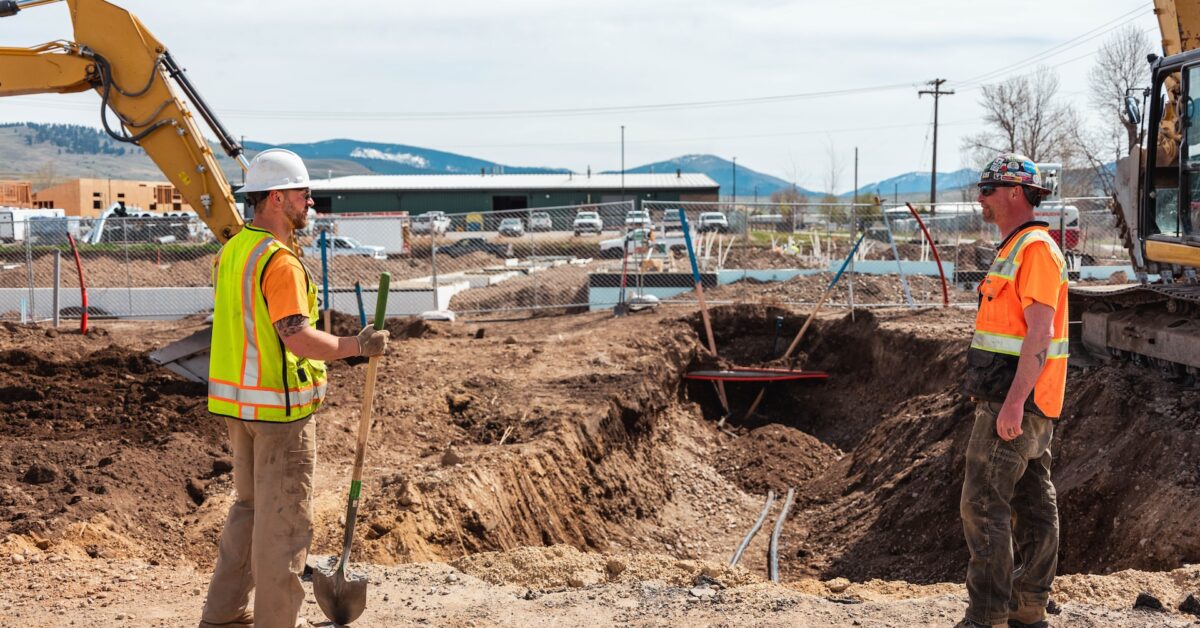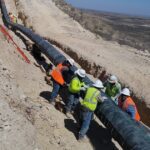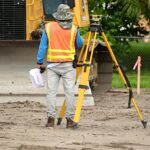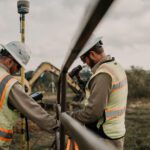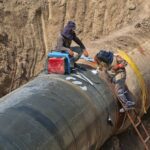Pipeline systems serve as the lifeblood of our modern infrastructure, ferrying materials from water and gas to oil and waste. Pipelines are typically buried underground to safeguard these vital conduits from damage. So how far underground do they need to be?
The depth of cover is the vertical distance between the top of the underground pipeline and the surface above. The depth of cover impacts the pipeline’s safety, integrity, and regulatory compliance.
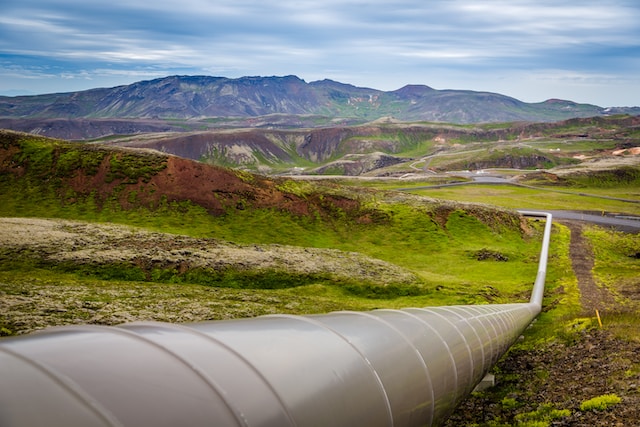
via Unsplash
Understanding the depth of cover is about more than just knowing how deep a pipeline is buried. It’s about mitigating the risks associated with accidental pipeline damage due to excavation or construction, enhancing protective measures against environmental factors, and informing emergency response in case of leaks or ruptures.
Pipeline depth of cover surveys, therefore, play an instrumental role in pipeline management. They employ geophysical methods like ground penetrating radar (GPR) or electromagnetic induction (EMI) to determine the pipeline’s burial depth accurately.
The resulting data guides the development of pipeline integrity management plans and aids in planning repair, maintenance, or replacement tasks.
The minimum depth depends on the pipeline material, the type of area, and local regulatory guidelines. PVC, ductile iron, and HDPE pipes require around 3 feet of cover, whereas concrete pipes may require up to 4 feet.
The critical principle is that the depth of cover must provide a protective envelope, safeguarding the pipeline’s functionality and longevity.
What is a Pipeline Depth of Cover Survey?
A pipeline depth of cover survey is a procedure to measure the depth at which underground pipelines are buried. This survey primarily ensures safety and regulatory compliance. Accurate depth measurement helps prevent accidental pipeline damage during excavation, construction, or other ground-disturbing activities that may compromise the pipeline’s integrity.
The survey uses various geophysical methods, such as ground penetrating radar (GPR) or electromagnetic induction (EMI), to accurately determine pipeline burial depth. These technologies generate data reflecting the underground environment, revealing the location and depth of pipelines without physically disturbing the ground.
The data collected during these surveys is instrumental in risk management, aiding the planning of repair and maintenance tasks. It also helps develop pipeline integrity management plans, ensuring that the pipeline complies with the required safety standards and assessing if additional protective measures, like pipeline coating or cathodic protection, are necessary.
A pipeline depth of cover survey is not just a measurement procedure. It is a vital part of pipeline integrity management, ensuring these critical infrastructures’ safe, efficient, and uninterrupted operation.
What Does Depth of Cover Refer to in a Pipeline Inspection?
In the context of a pipeline inspection, depth of cover refers to the vertical distance from the top of an underground pipeline to the ground surface above it. This measurement is paramount for many reasons, with safety and compliance with regulatory standards being the primary considerations.
Finding the adequate depth of cover through surveying processes ensures that the pipeline is adequately buried to prevent accidental damage due to excavation or construction activities and to protect it from external forces or environmental factors. This can prevent major damage to the environment as well as to human health.
Pipeline inspections involve determining this depth to assess the level of protection the pipeline has from physical disruptions. If the depth of cover is insufficient, remedial measures, such as adding more soil cover or protective padding, might be implemented.
In addition to physical protection, the depth of cover can also significantly impact the effectiveness of other pipeline protection measures. For instance, deeper pipelines typically have a better performance of cathodic protection, a method used to prevent pipeline corrosion.
Moreover, knowing the depth of cover is crucial in emergencies, such as a pipeline leak or rupture, where quick and accurate excavation is required. Thus, depth of cover is a vital factor in maintaining pipeline integrity and safety. For this reason, pipeline depth of cover surveys are typically a federal requirement for all new pipelines.
What is the Process of a Pipeline Depth of Cover Survey?
A pipeline depth of cover survey involves a systematic approach to map and measure the depth at which underground pipelines are buried. This process usually commences with preliminary planning, which includes gathering existing data about the pipeline (such as its location, size, and material type) and a site visit to understand the terrain.
The next step involves selecting the appropriate geophysical method for surveying, such as ground penetrating radar (GPR) or electromagnetic induction (EMI). The chosen method is largely determined by the site’s specific characteristics and the pipeline material.
These techniques emit signals into the ground, which bounce back like a pipeline when they encounter a material change. That means that the ground itself doesn’t actually have to be disturbed for most pipeline depth of cover surveys.
The equipment is moved systematically over the survey area to collect data. These data are then interpreted and a digital map is created, illustrating the location and depth of the pipeline. This map provides a comprehensive view of the pipeline’s position relative to the surface and other underground features.
Once the survey is complete, the results are compiled into a comprehensive report. This report will include the depth of cover and any detected anomalies, helping in the effective planning of future maintenance, repair, or replacement operations.
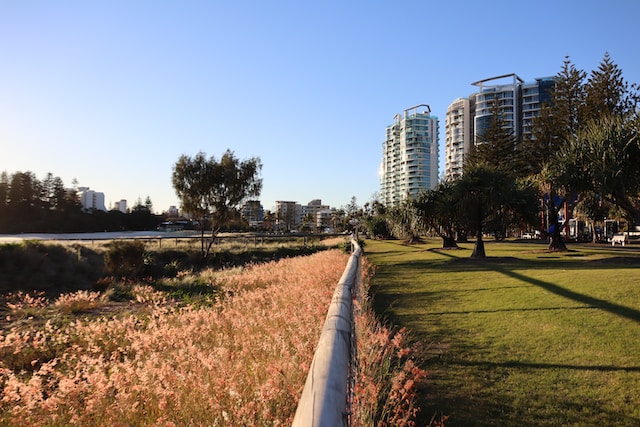
via Unsplash
How Long Does a Pipeline Depth of Cover Survey Generally Take?
The duration of a pipeline depth of cover survey can vary significantly based on several factors, making it difficult to provide a definitive time frame. However, a broad understanding can be given to add some clarity to this issue.
Firstly, the size and complexity of the pipeline system being surveyed can substantially impact the duration. A small, straightforward pipeline in an easily accessible area might take just a few hours or a day to survey, while a large, complex system extending over several miles could take weeks or even months to investigate fully.
Secondly, the nature of the terrain also plays a crucial role. Surveying pipelines in flat, open areas is typically faster than in hilly or densely vegetated regions or areas with difficult access due to urban infrastructure.
Thirdly, the type of surveying technology used can affect the speed of the process. While some techniques, such as ground penetrating radar (GPR) or electromagnetic induction (EMI), can collect data relatively quickly, the data processing and interpretation stages can be time-consuming.
Lastly, regulatory procedures, safety checks, and the need for accuracy and thoroughness may add time to the survey. It’s important that all of these matters are attended to accurately and professionally to avoid further slowdowns.
While it’s difficult to give an exact time frame, a well-planned and executed pipeline depth of cover survey is a meticulous process that takes time to ensure accuracy and safety.
FAQs
What is the minimum depth of cover for a pipeline?
The minimum depth of cover for a pipeline varies depending on the regulatory guidelines in different regions and the type of area in which the pipeline is installed. In general, pipelines are often buried at least 3 feet (about 0.91 meters) below the surface in rural and agricultural areas.
For urban areas or those with heavy vehicular traffic, pipelines are typically buried deeper, often 4 feet underground (about 1.22 meters) or more, to provide additional protection against damage.
How does pipeline depth of cover vary by material?
The minimum depth of cover for different pipe materials often depends on their respective durability, resistance to load and pressure, and standard industry practices. PVC and HDPE pipes, which are lightweight and flexible, typically require around 3 feet of cover for protection.
Ductile iron pipes, due to their robustness, require a similar depth. Concrete pipes, being sturdy but brittle, often necessitate a greater depth, around 3 to 4 feet. Depending on the material, sewer pipes usually require 2 to 4 feet of cover. Please note that actual requirements can vary depending on specific circumstances and regulatory guidelines.
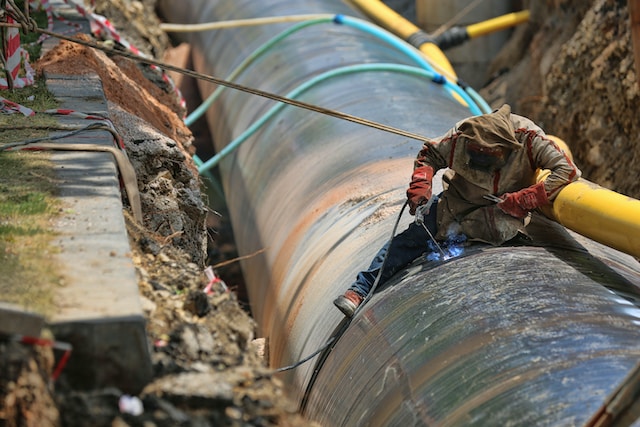
via Unsplash
Final Thoughts
While often overlooked, the depth of cover for underground pipelines plays a crucial role in safeguarding our essential infrastructure. Serving as a protective barrier, the depth of cover mitigates risks associated with accidental damage and external disruptions, reinforcing these pipelines’ safety, integrity, and longevity.
The depth of cover doesn’t merely imply the depth at which a pipeline is buried. It also encompasses a comprehensive understanding of the risks related to pipeline damage and the best preventive measures. It informs proactive and informed decision-making in emergencies, enhancing our response to potential leaks or ruptures.
To this end, pipeline depth of cover surveys are indispensable tools in pipeline management. By employing advanced geophysical methods, these surveys accurately map the burial depth of pipelines, providing critical data for maintenance, repair, and replacement planning.
The data from these surveys also aids in developing robust pipeline integrity management plans, ensuring regulatory compliance.
However, it’s essential to remember that depth of cover is not a uniform criterion. The pipeline material, geographical area, and regulatory guidelines all influence the minimum required depth. While PVC, ductile iron, and HDPE pipes might need around 3 feet of cover, concrete pipes often require greater depth.
Regardless of these variations, the overarching principle remains consistent: an adequate depth of cover is vital to protect pipelines, ensuring their continuous and safe operation and supporting the smooth functioning of our modern infrastructure.
